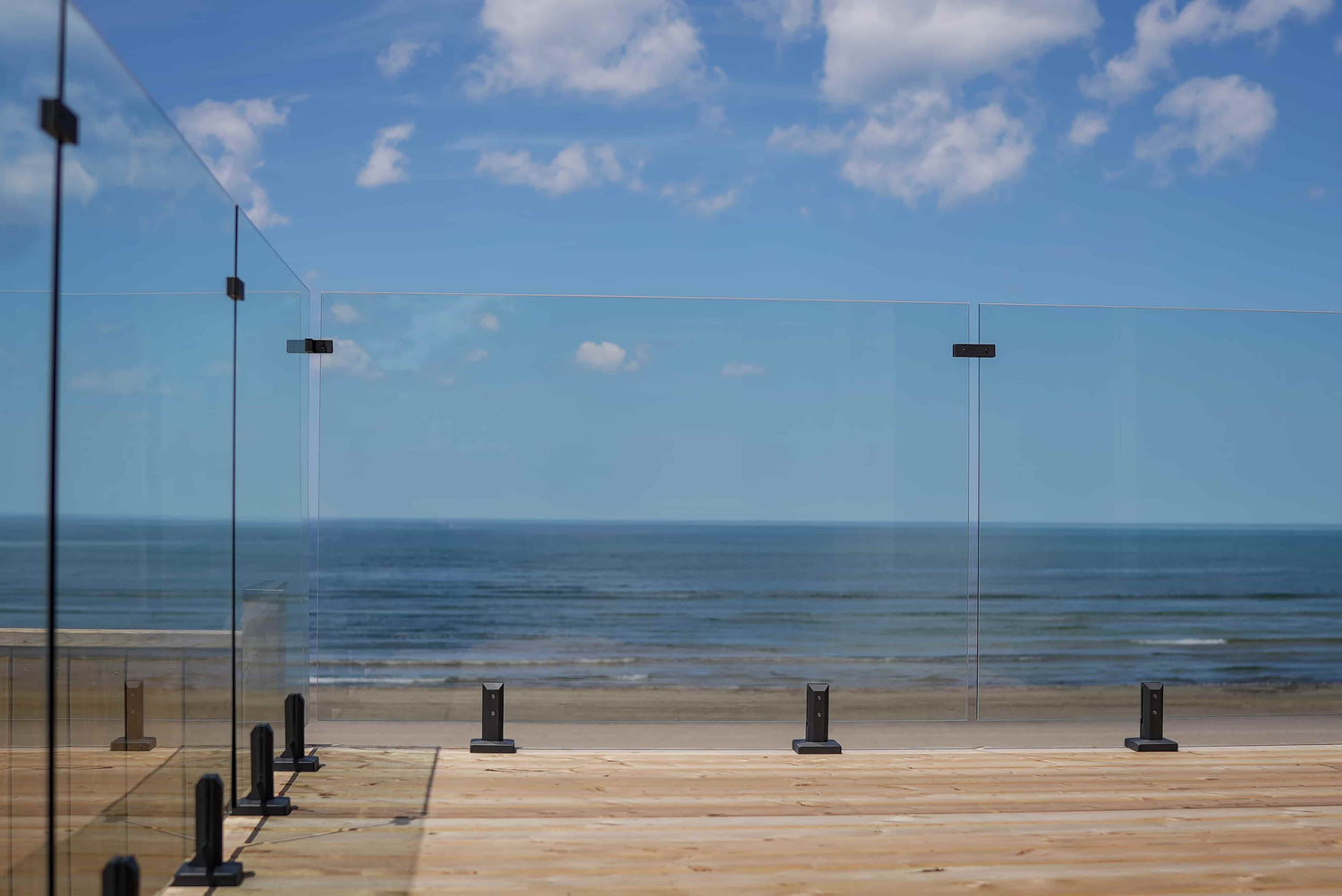New Jersey Glass Railing Codes: What You Need to Know Before You Build
Both the skyline and the trends in residential and commercial building in New Jersey are always changing. Glass railings are a feature that significantly influences the aesthetics of coastal mansions in Ocean County and modern townhouses in Jersey City. These railings give homeowners the contemporary elegance they desire with their straight lines and clear sightlines. However, you cannot rely solely on appearances in a state with as many regulations as New Jersey. Here, building codes are rigorously enforced and must be adhered to exactly. A smooth project or one that is halted by red tape may depend on how well the details are handled.

As stated in NJAC 5:23, New Jersey has incorporated the 2021 International Residential Code (IRC) and International Building Code (IBC) into its Uniform Construction Code (UCC) as of September 6, 2022. These regulations are non-negotiable statewide, which makes them particularly crucial for glass railing installations. Every municipality follows the same code, thus local modifications are not permitted. This implies that the guidelines are the same whether you're building a back deck in Princeton or a rooftop railing in Newark.
New Jersey's Unified Code Structure
The centralized construction code in New Jersey sets it apart from other U.S. states. All construction projects are governed by the UCC, whose most recent revision introduced the IRC and IBC for 2021. These codes cover everything. One- and two-family homes are covered by the IRC, whereas multifamily, commercial, and mixed-use buildings are covered by the IBC.
The state’s Department of Community Affairs (DCA) is responsible for code administration. Its website offers detailed guidance and official documents, which you can review directly on their Uniform Construction Code page.
To simplify compliance, many builders rely on code-ready glass railing systems designed specifically for the current IRC and IBC editions.
Residential Railing Requirements Under IRC 2021
According to Section R312 of the 2021 IRC, glass railings on residential structures must fulfill certain requirements. This section's objective is to reduce the risk of falls, particularly in raised spaces like porches, balconies, and stairwells. A guardrail is required for walking areas that are more than 30 inches above grade. The height of that guardrail must be at least 36 inches. The railing must be between 34 and 38 inches vertically measured from the stair nosing if it doubles as a stair handrail.
The railing system's openings cannot be larger than 4 inches. The purpose of this rule is to keep kids and dogs from getting in. This also affects design choices, particularly for homeowners who want to construct railings with cable infills or balusters that are widely spaced. To avoid guesswork, reference IRC 2021 Section R312 directly when planning your railing layout.

Glass and Structural Standards Under IBC 2021
The IBC is essential for commercial structures, apartment complexes, and high-occupancy buildings, whereas the IRC is more focused on residential buildings. However, depending on their classification, even some bespoke homes can be subject to IBC jurisdiction. All glass used in railing systems must be laminated or tempered safety glass, under Section 2407 of the IBC. Because standard annealed glass has a significant risk of dangerously shattering, it does not fulfill code. In certain applications, laminated glass is better because it doesn't break.
Any railing system using tempered glass must include a top rail unless the glass has been tested to retain its integrity after impact. Depending on product testing and certification, laminated glass may occasionally permit the removal of a top rail. A 200-pound focused force applied in any direction at the top rail must also be supported by railing systems. This standard guarantees that the system will function in the event of an unintentional hit, heavy winds, or regular use.
To meet these demands, browse tested glass railing hardware built for 2021 code compliance. Additional clarity can be found through National Glass Association safety guidelines.
Avoiding Common Mistakes That Can Delay Your Project
Even with well-defined guidelines, preventable mistakes frequently cause projects to be delayed. Inappropriate glass kinds are a common problem. Installing a system that doesn't adhere to load-bearing or height specifications is also problematic. Other infractions include failing to take into consideration the 4-inch gap restriction or utilizing frameless tempered glass without a top rail. Contractors and homeowners can avoid these mistakes by investing in complete installation kits that are pre-tested for code compliance.
Glass Railing Code Essentials
|
Feature |
Requirement |
Purpose |
|
Guardrail Height |
Minimum 36 inches |
Prevents falls from elevated surfaces |
|
Stair Handrail Height |
Between 34–38 inches |
Promotes ergonomic support on stairways |
|
Opening Limitations |
Maximum 4-inch gap |
Ensures safety for children and pets |
|
Glass Type |
Tempered or laminated only |
Provides shatter resistance and durability |
|
Load Resistance |
200 lbs. applied in any direction |
Maintains structural integrity under pressure |
|
Top Rail Requirement |
Required unless laminated glass is used and tested |
Adds redundancy in frameless systems |
Wrapping Up: Building Smart with Code in Mind
By implementing the 2021 I-Codes, New Jersey guarantees that building requirements remain up to date and safety-focused. For property owners, this means that each railing needs to pass a thorough examination and satisfy all material, load, and height requirements.
As long as they adhere to the rules, glass railings may provide an amazing combination of style and functionality, whether you're a builder overseeing a large-scale development or a homeowner designing your ideal deck.
FAQs: Glass Railing Compliance in New Jersey
1. What building codes are enforced for glass railings in New Jersey?
New Jersey uses the 2021 editions of the IRC and IBC as its Uniform Construction Code. These are enforced statewide.
2. Are municipalities allowed to make local amendments?
No. The state’s Uniform Construction Code eliminates local modifications. Every city and town must follow the same standard.
3. What types of glass are required?
Only tempered or laminated safety glass is allowed. Annealed glass does not meet code.
4. How high do glass railings need to be?
A minimum of 36 inches for guards, and 34–38 inches for handrails on stairs.
5. Is a top rail always needed?
Yes, unless you're using laminated glass that has been tested to remain intact after breakage.
Let customers speak for us

Garde-corps en verre près de chez vous
Découvrez comment The Glass Railing Store offre un service exceptionnel à nos clients, grâce à notre équipe dévouée et compétente et à leur amour pour nos produits de garde-corps en verre .







